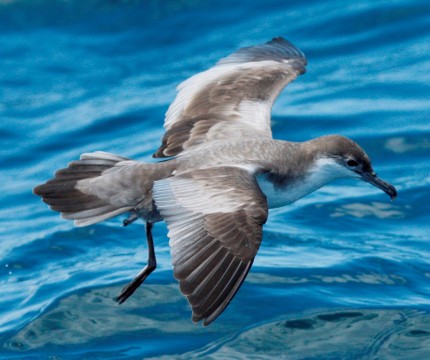Smart Solutions for Seabirds
A walk along New Zealand’s coast over 800 years ago would have been very risky. You were highly likely to break your ankle as you collapsed one (or more) seabird burrows honeycombing the countryside. There were literally billions of seabirds inhabiting not only the coast but also far inland, breeding successfully on virgin land in the absence of pest mammals, fuelled by ample food from our abundant oceans.
Fast forward to the present and we have far fewer seabirds, with most restricted to small populations on our offshore islands such as Great Barrier. Despite this, we are considered the ‘seabird capital of the world’ with over 86 species breeding in New Zealand – a quarter of the world’s seabird population.
The Hauraki Gulf is considered the hot spot for our seabird species, providing important breeding grounds for 25 species of seabird. The restricted ranges and often small populations of some seabird species means many of them are threatened species. Indeed many are equally or more threatened than our more familiar ‘land’ birds.

Buller’s shearwater are endemic to New Zealand
Whilst habitat destruction and predation were considered the main cause of seabird decline in the past, the greatest threat they now face is bycatch associated with fishing. Seabirds can be attracted to fishing boats and may get tangled or hooked in fishing gear. Whilst attention has focused on the role commercial fishers play, the spotlight is now turning to our recreational fishing community.
Most fishers won’t ever hook or entangle a seabird, but some will. In fact studies show that 30 seabirds a day are either hooked or entangled by fishers. Certain species are so threatened that even the death of a single bird really does matter, especially when the death of the adult also results in the death of their chick (a seabird chick requires both parents to supply enough food).
When you are fishing, look out for seabirds. To help prevent seabirds being attracted to your boat when fishing;
Fish Tidy – Keep any bait on board in closed containers and maintain a clean deck, free of any fish waste.
Fish Fast – When you do bait up, sink both your bait and burley fast and deep, preferably beyond the diving depth of birds (at least six metres).
Distract or deter birds – If birds do get attracted to your boat, try to create a safe zone around the boat – some boaties use the deck hose to spray towards birds, some use a semi empty milk bottle bobbing just above the water’s surface to act like a scarecrow to dissuade birds.
Some birds to keep a watch out for when fishing include Buller’s shearwater, Fluttering shearwater/Pakaha, Black Petrel/Taiko, Flesh-footed shearwater/Toanui, Grey-Faced Petrel/Oi and Cooks petrel/Titi. The many species of petrels and shearwaters are difficult to distinguish, especially on a lumpy sea, but observing their markings and behaviours will help you determine who’s who and also what they may be informing you about which fish are present.
For more information check out Forest & Bird’s ‘Save our Seabirds’ campaign or visit Southern Seabird Solutions.
